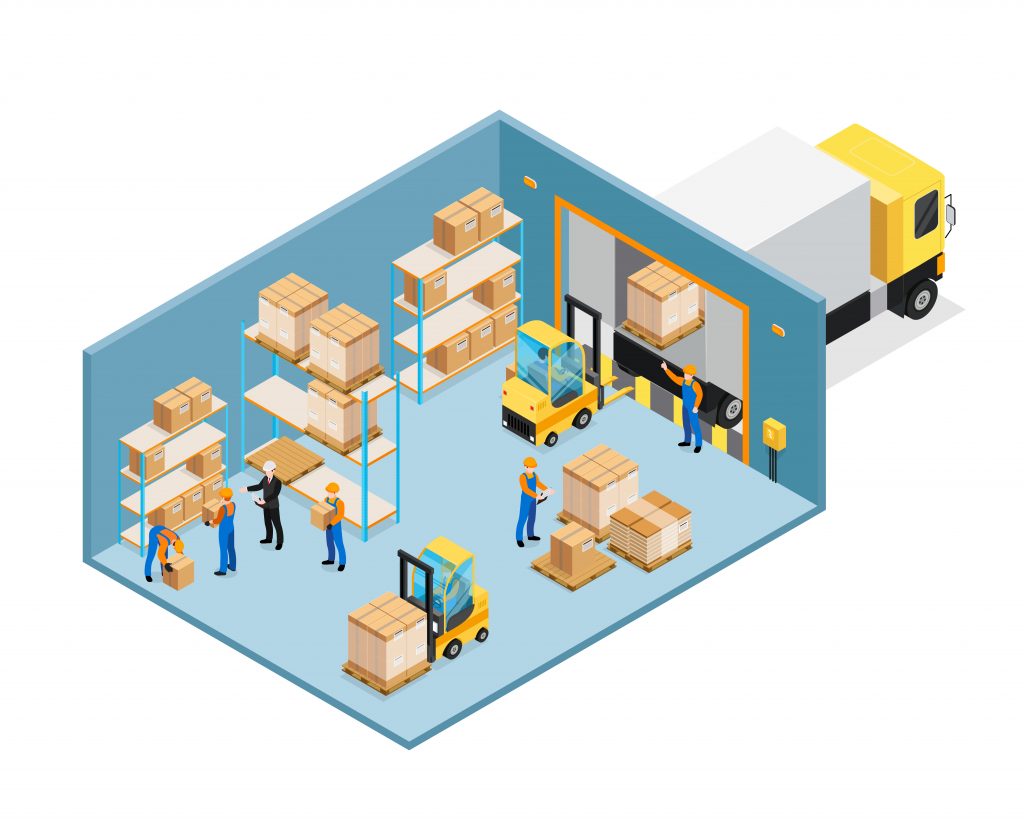
Your business is growing steadily, shipments are rolling in from suppliers, orders from customers are rolling out perfectly. All of these signs that your business is hearty and healthy. This is undoubtedly the time you must feel great about all the effort you have put into building your company and making it run successfully.
The picture changes as you reach the closure for the day. That’s the time when the entire process chain at your office and warehouse appears just out of a war movie – messy to the core.
Warehouse optimization is the key to an effective operation across warehouses of various sizes. The top considerations in warehouse optimization include automation, disciplined process, and strong determination and dedication towards saving space, resources, and time. This also helps towards the improvement of management, communication, flexibility, and customer satisfaction. The next set of essential factors constitute product placement, warehouse flow, storage, and retrieval mechanisms.
Why Optimize?

Optimized warehouses are always the ones that boast the ability of the business to beat the competitors on every level. The competitive advantages come in the form of,
● Minimum labor expenses
● Enhanced customer service,
● Improved inventory accuracy
● More flexibility
● Responsiveness
Optimizing the warehouse work-flow with the aid of a warehouse management system offers you more advantages over and above just checking out every corner of the entire infrastructure and every aspect of the process flow.
This will invariably aid you in picking the inconsistencies across the workflow. This will improve the key metrics of warehouse management, such as proper order and delivery on-time.
Here are a few recommendations to optimize your warehouse management system for your convenience.
6 Fundamental Techniques to Optimize Your Warehouse Management System

1. Automation is the key
Automating the procedures like picking, packing, and shipping procedures eliminate the need for human intervention related to products and orders. Automation of warehouse control system and warehouse management system helps in real-time management of material handling equipment. This, in turn, assists the warehouse managers in preventing bottlenecks. Automation also aids accurate, efficient, and quick data collection.
2. Working on the warehouse layout design
Optimizing the layout design of the warehouse makes use of the available space in the most efficient way. The warehouse managers should take an analytical approach towards data management to facilitate this. The data are available on reserve storage, cross-docking, forward pick, receiving, shipping, special handling lines, assembly, inspection, and quality should be evaluated well. This will eventually lead to optimization of product storage, inbound, and outbound operations.
3. Optimizing the warehouse receiving process
The warehouse receiving process constitutes receiving the cargo properly and utilizing it effectively. The better you will manage this aspect less, the chance that the cargo gets accumulated at the receiving docks. The best solution to end such issues is installing equipment such as conveyors and power pallet trucks. This will help in unloading the cargo at ease and clear the dock areas at a faster pace. It is also wise to use software like labor management and dock schedulers to allocate the personnel adequately. This will also involve anticipating the upcoming shipments.
4. Optimizing the putaway process
Putaway involves moving goods for storage to an optimal location. This should be efficient, effective, and fast. It is best to use software for slotting and space management. This automatically leads to assigning each cargo with optimal space. Additionally, the devices and the mobile applications show cargo to get stored in the correct locations.
5. Optimizing the storage
It is crucial to track the KPIs to optimize the storage process. Make use of software that automatically calculates the level of utilization of the warehouse storage. This focuses on the determination of each aspect related to the storage procedure by tracking the KPIs. The storage mechanism should be utilized based on the size of the facility. Allocate the storage location as per the specific set of cargo using the correct slotting optimization strategy. Creating a mix of products also improves warehouse management efficiency and maximizes the horizontal and vertical spaces.
6. Optimizing picking, packing, and shipping procedure
The use of mobile and wearable technology streamlines the operations related to the picking procedures. They aid the clerks to view the picking list in wireless mode. This will also facilitate real-time system access, scan the various points across the warehouse. Conducting ABC analysis, choosing the right picking method, and using the correct software set are other viable options to optimize the picking process. The use of software for the packing system will allow you to access all the data to understand the actual requirement for packing material accurately. This will keep the packing cost low and will ensure optimal safety for each item. Lastly, for shipping process optimization, it is critical to use specific software. The labor-management systems, devices, and mobile applications for shipping will help you access the right set of information. This will ensure that the cargo is loaded or unloaded efficiently.
Little elements that dramatically affect warehouse optimization and accounting for them leads to improvement of the overall process.
Such factors include,
● Training
● Tools
● Managing miscellaneous storage
● Low-cost equipment
● Equipment maintenance
● Identification
● Cooling
● Housekeeping
● Forms and paperwork
Irrespective of the warehouse management system optimization avenues taken into account, it is critical to identify the various warehouse elements well. The staging lanes and the storage areas should be determined well, and at the same time recognizing the locations and clearing the product is a must.
The warehouses that are winning the optimization game have all the labels everywhere, like pallet racks, storage shelves, aisles, even cartons, and pallets. It is vital to have all the policies and processes handy so that your warehouse management system works flawlessly and remains coordinated with your staff. This will undoubtedly meet the challenges that keep on arising in the contemporary warehouse workplace model. Thus, it would be easier to develop efficient working methodologies over time, gain satisfied stakeholders, engaged staff members, and state-of-the-art delivery mechanisms.
 Start using ZapInventory today
Start using ZapInventory today
